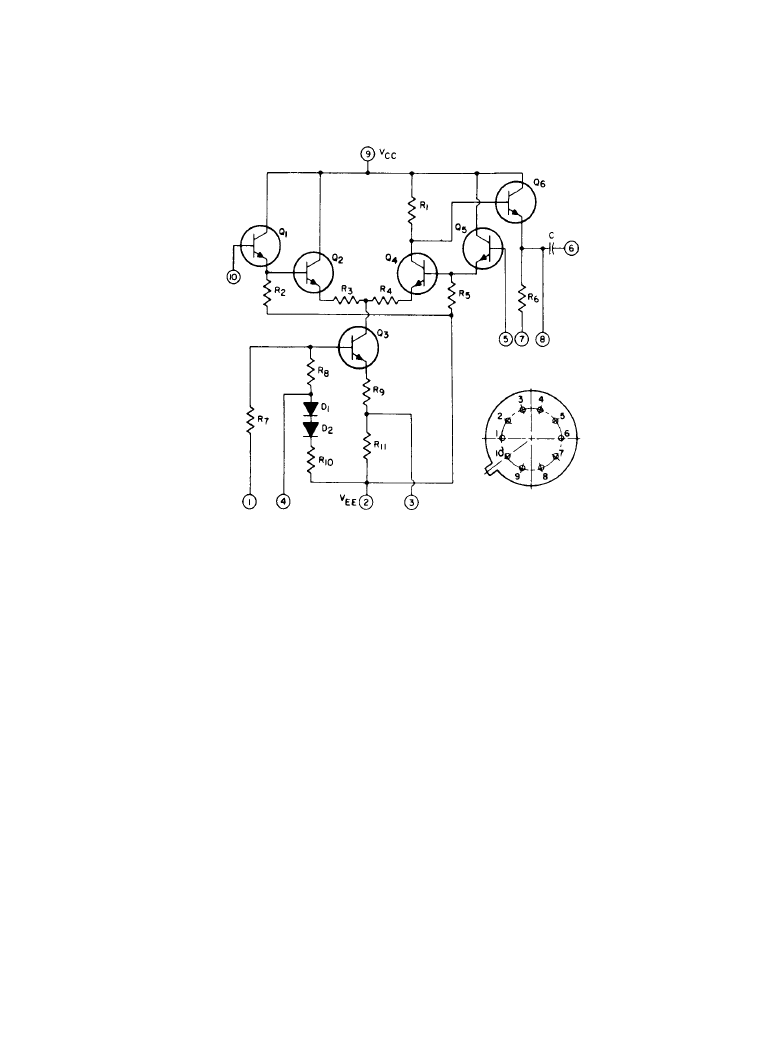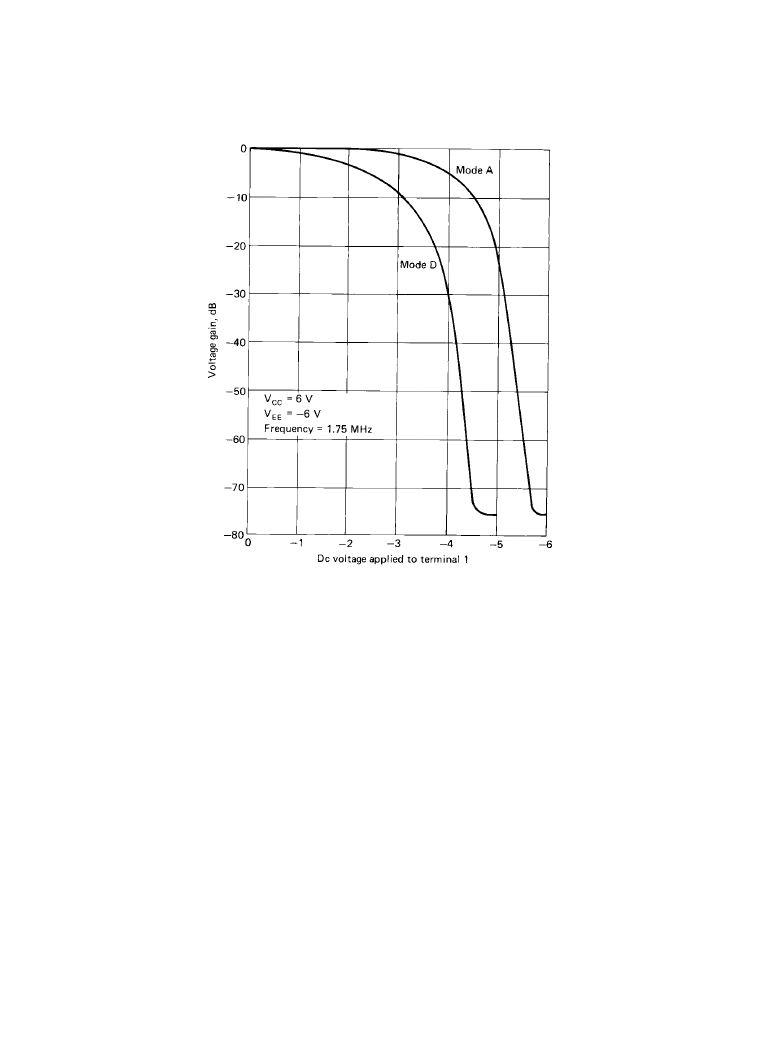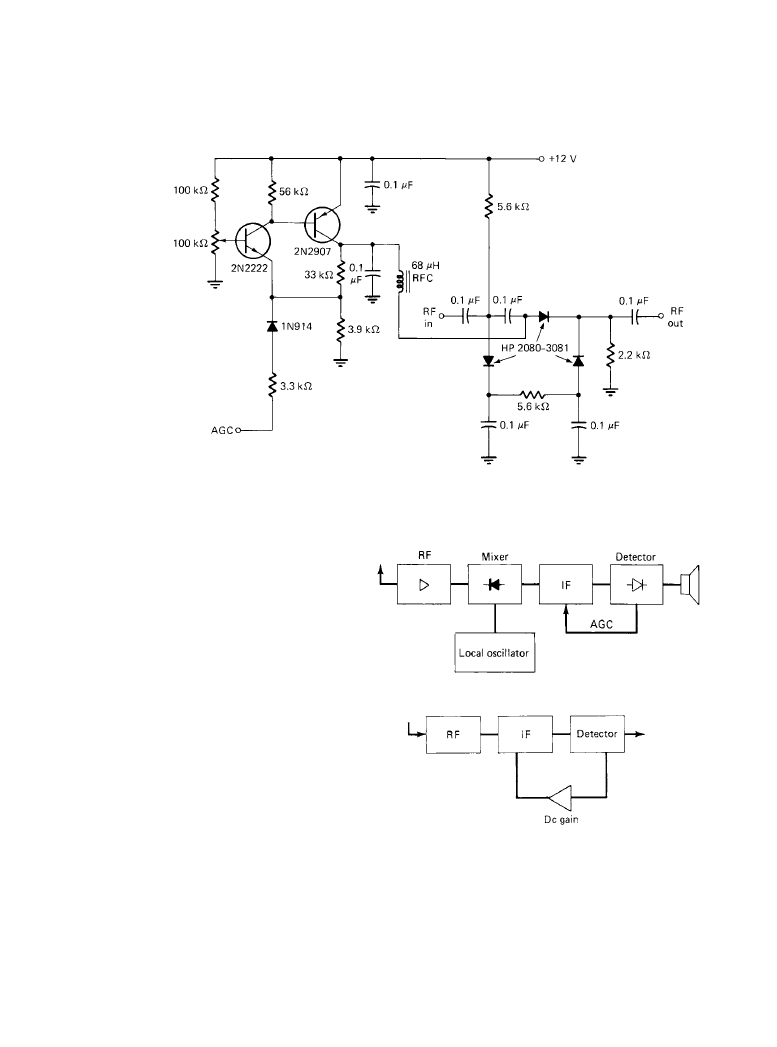ВУЗ: Казахская Национальная Академия Искусств им. Т. Жургенова
Категория: Книга
Дисциплина: Не указана
Добавлен: 03.02.2019
Просмотров: 21610
Скачиваний: 19

12-48 Radio Receivers
ficult to align properly, and 2) the system was susceptible to IM and overload (even in the early
IF stages) from out-of-band signals. The classic approach did have some advantages, though.
First, limiting from strong impulse noise would occur in early stages where the broad bandwidth
would reduce the noise energy more than after complete selectivity had been achieved. Second,
such designs were relatively inexpensive to manufacture.
Modern radios use multiresonator filters inserted as early as possible in the amplification
chain to reduce nonlinear distortion, simplify alignment, and permit easy attainment of a variety
of selectivity patterns. The simple single- or dual-resonator pairs are now used primarily for
impedance matching between stages or to reduce noise between broadband cascaded amplifiers.
LC Filter
lnductor-capacitor resonators are limited to Q values on the order of a few hundred for reason-
able sizes. In most cases, designers must be satisfied with rather low Q. The size of the filter
depends on the center frequency. Two separate LC filters can easily cover the AM and FM broad-
cast bands. Skirt selectivity depends on the number of resonators used. Ultimate filter rejection
can be made higher than 100 dB with careful design. Filter loss depends on the percentage band-
width required and the resonator Q. It can be as high as 1 dB per resonator at narrow bandwidths.
This type of filter does not generally suffer from nonlinearities. Frequency stability is limited
by the individual components and cannot be expected to achieve much better than 0.1 percent of
center frequency under extremes of temperature and aging. Except for front ends that require
broad bandwidth filters, LC filters have been largely superseded in modern radios by new filter
technologies.
Quartz Crystal Filter
While several piezoelectric materials have been used for filter resonators, quartz crystal units
have proved to be the most satisfactory. Filters are available in frequencies that can easily cover
the AM broadcast band, and the FM band IF frequency (10.7 MHz). Standard filter response
shapes are available to simplify the receiver design process and keep costs down. Ultimate filter
rejection can be in excess of 100 dB. Input and output impedances are determined by input and
output matching networks in the filters. Insertion loss varies from about 1 to 10 dB, depending
on filter bandwidth and complexity. Frequency accuracy and temperature stability can be main-
tained to tight tolerances.
Monolithic Quartz Filter
A monolithic quartz filter is made up of a number of resonators constructed on a single quartz
substrate. The principal energy of each resonator is confined primarily to the region between the
plated electrodes, with a small amount of energy escaping to provide coupling. Usually these fil-
ters are limited to about four resonators. Monolithic quartz filters are available for operation
through the FM band with characteristics generally similar to discrete quartz resonator filters,
except that the bandwidth is limited to several tenths of a percent. Monolithic quartz filters are
also smaller and lighter than discrete resonator filters.
Downloaded from Digital Engineering Library @ McGraw-Hill (www.digitalengineeringlibrary.com)
Copyright © 2004 The McGraw-Hill Companies. All rights reserved.
Any use is subject to the Terms of Use as given at the website.
AM and FM Receivers

AM and FM Receivers 12-49
Ceramic Filter
Piezoelectrie ceramics can be used to achieve some of the characteristics of a quartz filter, but at
a lower cost. Such filters are comparable in size to monolithic quartz filters but are available over
a limited center frequency range (100 to 700 kHz). This limits ceramic filters to IF applications
for AM reception (455 kHz). The cutoff rate, stability, and accuracy of a ceramic filter are not as
good as quartz but are adequate for many applications. Single- and double-resonator structures
are available. Multiple-resonator filters use electrical coupling between sections.
12.3.3c
RF Amplifier and AGC
Depending on the receiver design, an amplifier stage may be used to increase the voltage of the
signal received by the antenna (which may be 1 mV or less) to a level sufficient to drive the
mixer. Because of the wide range of signals to which a receiver must respond, the input device
must be capable of wide dynamic range. It must also be as linear as possible to minimize the gen-
eration of IM products from strong signals at the input. It follows that the number of strong sig-
nals should be minimized by restricting receiver bandwidth at as low a gain level as possible.
Thus, gain should be low prior to the most narrow bandwidth stage in the receiver (the IF).
At AM frequencies, it is common practice to avoid RF amplification and use the mixer as the
input device of the receiver. Bandwidth restriction is handled by filters in the first IF amplifier
stage.
When the desired signal is relatively strong, the RF amplifier may raise it to a level that will
cause distortion in later stages. Automatic gain control (AGC) is, therefore, provided for most
RF amplifiers. AGC circuits arc basically low-frequency feedback systems. They are necessary
in a receiver to maintain a relatively constant output level when the input signal changes fre-
quently. The successful design of an AGC circuit that will perform satisfactorily under all
expected signal conditions is a major challenge.
Gain control is generally distributed over a number of stages. The gain in later IF stages is
reduced first, and gain in earlier (RF and first IF) stages is reduced only for signal levels suffi-
ciently high to assure the desired S/N. Variable gain amplifiers are controlled electronically.
When attenuators are used in a receiver, they are usually operated electrically by either variable
voltages for continuous attenuators or by electric switches (relays or diodes) for fixed or stepped
attenuators.
The simplest method of gain control is to design one or more amplifier stages to change gain
in response to a control voltage. One common configuration uses a differential pair of common-
emitter amplifiers whose emitters are supplied through a separate common-emitter stage. The
gain-control voltage is applied to the base of the latter stage, while the signal is applied to one (or
both, if balanced) of the bases of the differential pair. This approach has been implemented in a
variety of linear integrated circuits. Figure 12.3.5 shows a schematic diagram of one such IC.
The gain-control voltage curves are given in Figure 12.3.6.
A PIN diode attenuator can also provide the low-distortion gain control that is especially
important prior to the mixer. Figure 12.3.7 shows such a circuit and its control elements. The
control curve has approximately linear decibel variation over most of its 60-dB range. The pi-
type attenuator circuit provides a good match between terminations over the control range. The
minimum useful frequency for a PIN diode attenuator varies inversely with the minority carrier
lifetime. For available diodes, the low end of the HF band is near this limit.
Downloaded from Digital Engineering Library @ McGraw-Hill (www.digitalengineeringlibrary.com)
Copyright © 2004 The McGraw-Hill Companies. All rights reserved.
Any use is subject to the Terms of Use as given at the website.
AM and FM Receivers

12-50 Radio Receivers
The AGC Loop
The design objective of the AGC loop is to provide a substantially constant signal level to the
demodulator despite changes in the input signal level. Figure 12.3.8 shows a simplified block
diagram of a receiver with AGC. The input voltage to the RF amplifier stage may range between
1
µV and 1 V. The envelope of this voltage is detected at the input to the detector stage. This sig-
nal is processed to produce the control voltages necessary for the variable-gain device (or
devices) in the IF amplifier chain. This control voltage may be increased in level by an amplifier
stage, as shown in Figure 12.3.9.
As the AGC tries to maintain constant output voltage with a varying input voltage, the issue
of attack and decay times comes into play. The AGC system has a finite delay in its response to a
change at the input of the receiver. In practice, it is not desirable for the AGC to have too fast a
reaction time. In such a case, any static pulse, ignition noise, or other impulsive interference with
a fast rise time would be detected by the AGC and desensitize the receiver for a given “hold
time.” The loop must be fast enough, though, to respond to signal level variations caused by ter-
rain, artificial structures, and multipath.
12.3.3d
Mixer
In the mixer circuit, the RF and LO signals are acted upon by the nonlinear properties of a device
(or devices) to produce a third frequency, the IF. At AM frequencies, receivers are usually built
Figure 12.3.5
A gain-controlled RF amplifier integrated circuit suitable for use in AM-FM receivers.
Downloaded from Digital Engineering Library @ McGraw-Hill (www.digitalengineeringlibrary.com)
Copyright © 2004 The McGraw-Hill Companies. All rights reserved.
Any use is subject to the Terms of Use as given at the website.
AM and FM Receivers

AM and FM Receivers 12-51
without RF preamplifiers; the antenna is fed directly to the mixer stage. In this frequency range,
artificial and atmospheric noise is usually greater than the receiver NF. At FM frequencies, an
RF amplifier is typically used. The mixer is located in the signal chain prior to the narrow filter-
ing of the first IF.
Ideally, the mixer should accept the RF and LO inputs and produce an output having only one
frequency (sum or difference), with signal modulation precisely transferred to this IF. In actual
practice, however, mixers produce the desired IF but also many undesired components that must
be filtered. Any device with nonlinear transfer characteristics can act as a mixer. For the pur-
poses of this discussion, two classes will be discussed:
•
Passive mixers, which use diodes as the mixing elements
•
Active mixers, which employ gain devices (e.g., bipolar transistors or FETs)
Figure 12.3.6
Gain-control curves of the CA3002 RF amplifier shown in Figure 12.3.5. The “Mode
A” and “Mode B” traces refer to different circuit configurations for the device.
Downloaded from Digital Engineering Library @ McGraw-Hill (www.digitalengineeringlibrary.com)
Copyright © 2004 The McGraw-Hill Companies. All rights reserved.
Any use is subject to the Terms of Use as given at the website.
AM and FM Receivers

12-52 Radio Receivers
Passive Mixer
Passive mixers have been built using germanium and silicon diodes. The development of hot car-
rier diodes, however, has resulted in a significant improvement in passive mixers.
Figure 12.3.7
Schematic of a PIN diode attenuator. (
From [1]. Used with permission.)
Figure 12.3.8
Simplified block dia-
gram of a receiver with AGC. (
From
[1].
Used with permission.)
Figure 12.3.9
Block diagram of a
receiver with amplified AGC. (
From
[1].
Used with permission.)
Downloaded from Digital Engineering Library @ McGraw-Hill (www.digitalengineeringlibrary.com)
Copyright © 2004 The McGraw-Hill Companies. All rights reserved.
Any use is subject to the Terms of Use as given at the website.
AM and FM Receivers